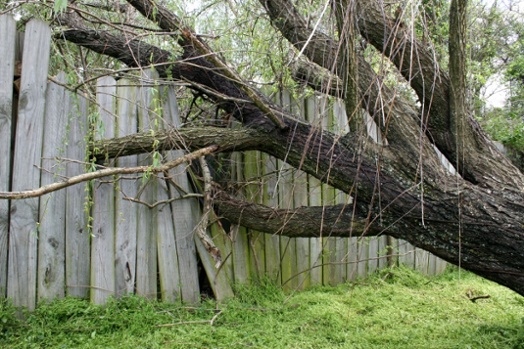
A good fence can do wonders for a house. However, we all know that some DIY projects do not urn out as perfectly as we imagined in our heads. Building a fence is no different. Building a fence may seem straightforward, but it is not. If done incorrectly it can be an eyesore and not complete the job it was intended for. Therefore, planning is essential for a project like this.
Develop a Plan
Things that should be done before the first hole is dug:
- Check Utility lines – When digging holes, no one wants to take out phone, cable, or internet lines for either their own home or a neighbor’s home. Before digging starts, the homeowner should call their utility company to come out and mark where the lines run underground.
- Know the codes – Permits may be required to build a fence. A homeowner should research township or city codes to see if a permit is needed for the project. Homeowners should also research if their fence can only be a certain height or be made from a particular material. Calling the local zoning department or homeowners association could help with this.
- Notify Neighbors – When performing any sort of outdoor project that may infringe on a neighbor’s property it is always wise to inform your neighbors of the pending project. This will hopefully prevent any disputes from occurring once the construction begins.
Choose the Material
The material that the fence will be made of will affect the appearance and price of the fence, and each material has their own pros and cons. Thus, when choosing a material, it often comes down to why the fence is being built.
- Wire, Mesh, Chain – This is the cheapest option and costs about $1-$6 per linear foot. This is a great choice for marking property, keeping in animals, or security. However, this type of fence does not offer much privacy. Some people also do not see this fence as visually appearing.
- Wood – This is the most popular materials to build a fence with. Wood fences are good for privacy and has a natural look to it. However, this type of fencing does require maintenance for it to last. This may include regular upkeep and staining.
- Vinyl – This material is lightweight, affordable, and durable. Vinyl fences can be made to appear like wood, or they can look like plastic. Though these fences are easy to maintain and offer privacy, they are not great for security.
Start to Build
After the fence has been mapped out, the materials have been bought, wires have been mapped out, and neighbors have been notified, it is time to start building the fence.
- Measure and Mark – Homeowners, or whoever is building the fence, should determine where the posts will go and take into consideration any property lines and elevation changes.
- Dig Holes for Posts – For this step, the homeowner can manually dig a hole or use a powered auger. The hole itself should be about one third the height of the post. However, the requirements might differ in areas of high winds or very cold winters.
- Secure Posts in Cement – The posts should be anchored in the hole using cement. Homeowners should make sure that the post is level before letting the concrete cure for 24 hours.
- Attach Panels – Once the posts are in, it is time to attach the panels. Homeowners should make sure that the panels are secure and straight with the finished side facing out.
- Install Gates and other hardware – Gates and other hardware should be chosen based on material of the fence and should be installed according to the manufacturer’s instructions.
Once the fence is installed properly it is time to notify your insurance company that you have made an update to you home and installed a fence. Most insurance policies will cover damage to fences and other structures on the property. It is always a good idea to check with your agent though.
If you have any damage to fencing or other structures due to wind storms give us a call and we’ll help you through the insurance claim process.
About AAA Public Adjusters
AAA Public Adjusters, LLC, is a property loss consulting firm headquartered in Philadelphia, PA. Additional offices are located throughout Pennsylvania, New Jersey, Florida, Maryland, Delaware, Virginia, and North Carolina. AAA Public Adjusters have been fighting insurance companies for over 25 years. AAA Public Adjusters, Maximizing Your Claim!




